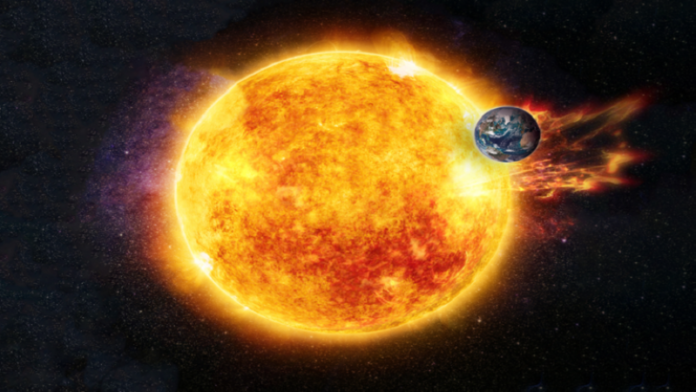A solar storm has hit the Earth, the Moon and Mars simultaneously, marking the first time an eruption has been measured on three planetary surfaces simultaneously.
An international fleet of spacecraft detected the blast, finding that the particles were energetic enough to fly through Earth’s magnetic field that normally shields our planet from such events, reports Al-Rai daily.
The solar storm hit the moon and Mars due to a lack of magnetic fields, which astronomers fear would be fatal for future human exploration. Humans are considering returning to the Moon and eventually to Mars within the next decades.
The study, which was conducted by scientists from the University of Science and Technology in China, stated: “We still face one major hurdle, which is space radiation, a huge and unavoidable risk to the health of crews, especially for long-term stays on future lunar or Mars stations. In particular, solar scattering particles (SEPs) from intense solar eruptions may boost radiation levels on the Moon or Mars to potentially dangerous values.”
The solar storm was discovered on October 28, 2021, but scientists published their findings today.
The team stated that the event was an example of a rare “ground level enhancement”, which means that the particles emitted in the explosion are energetic enough to pass through the magnetic bubble surrounding the Earth and protect us from less energetic solar flares.
It was only the 73rd ground-level improvement since records began in the 1940s, and none have been recorded since, but still the first time a solar storm hit three planetary surfaces simultaneously.
Because the Moon and Mars are not enclosed in a “bubble” like the Earth’s, particles from the sun can interact with the soil to form a secondary generation.
However, Mars has a thin atmosphere that stops most of the low-energy solar particles and slows down the high-energy particles.
The European Space Agency (ESA) shared a statement that “a radiation dose of more than 700 milligrams, a radiation absorption unit, may lead to radiation injury through bone marrow destruction, leading to symptoms such as infection and internal bleeding.”
The 2021 solar storm did not release enough radiation to harm astronauts in lunar orbit, as NASA’s Lunar Reconnaissance Orbiter recorded only 31 milligrams.
The study showed that the ExoMars measured 9 milligrams, 30 times more than the 0.3 milligram detected on the surface by the Curiosity rover.

















